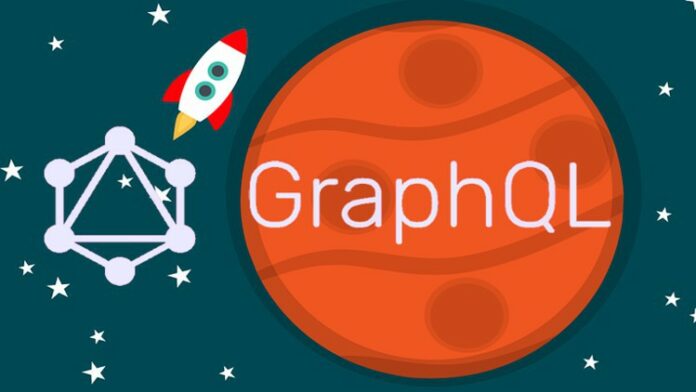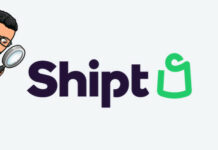Top Best And Most reliable GraphQL client will be discussed in this Article. GraphQL is one of the most superheated topics in API development right now, and for good reason: GraphQL APIs solve a lot of the problems that Restful and SOAP APIs had.
This article reviews the best GraphQL clients available today for developing and using the GraphQL API.
Top 10 best GraphQL clients in 2022
Top 10 best GraphQL clients are described here.
1.Testfully
Paid plans start at $49 per month and are available for free.
Testfully is an API testing and monitoring tool with a lot of features. Use Testfully to submit requests to your GraphQL API and automate your GraphQL API testing and monitoring with a variety of tools.
Testfully provides hassle-free GraphQL API testing and monitoring.
Pros who have been put to the test
- Provides a free plan that includes unlimited users and tests.
- Support for global and environment variables • Multi-step GraphQL tests • Import from Postman
- Easy API monitoring & API testing • Collections & Folders for better organisation • Integrates with your CI/CD system • Powerful alerting system • Collections and Folders for better organisation. This is another GraphQL clients.
Cons are put to the test.
- No GraphQL query syntax highlighting or auto-completion • Does not load GraphQL schema • No GraphQL query syntax highlighting or auto-completion • Does not load GraphQL schema
2. Insomnia
Individual plans start at $50 per year. Insomnia Pricing: Free.
Insomnia (part of Kong) is an open source API client for Windows, Mac, and Linux that includes a number of features for testing GraphQL APIs. If you’ve used Postman before, you’ll be right at home with Insomnia.
Insomnia is a fast and dependable API client that supports GraphQL. GraphQL APIs can also take advantage of Insomnia’s Restful API characteristics.
Insomnia benefits
- Load remote and JSON GraphQL schemas • Environment variables supported • Syntax highlighting and auto-completion for GraphQL queries • Import and export GraphQL requests • Folders and Collections for easier organisation Insomnia cons
- Only paid plans allow for team cooperation.
- You must first define your GraphQL API using the Open API definition in order to develop tests for it. Also check video converter software
3. Postman
Pricing: Free, with paid plans starting at $12 per user per month.
Postman is an API client that works with GraphQL. As a result, many of Postman’s Restful API features are also applicable to GraphQL APIs. Postman, on the other hand, does not have many unique capabilities for GraphQL APIs. If you’re a Postman user, we strongly suggest that you read our Postman alternatives post for some amazing Postman alternatives.
Postman is an excellent Restful API client, but it lags behind other tools in this arena when it comes to GraphQL support.
Professionals who work as postmen
- Import schemas from files or Github repositories • Supports Global and Environment variables • Auto-completion and Syntax highlighting for GraphQL queries
- The setup (pre-request) script is supported. It’s possible to write it in Javascript.
- Import and export your data • Organize your data with collections and folders
- Postman conventions were aided by dark themes.
- Multi-step (chained) requests are not supported by Postman.
- GraphQL schemas cannot be loaded from a URL.
4. GraphiQL
Open-source and free of charge.
GraphiQL is an open-source GraphQL client developed by the core GraphQL team, and it was the first GraphQL client released after the GraphQL definition was published.
The GraphiQL IDE is a desktop version of GraphiQL that runs on Windows, Mac OS X, and Linux. GraphiQL is capable of transmitting and browsing the schema of any GraphQL API.
GraphiQL is a good choice for personal projects that require basic functionality.
Pros of GraphiQL
- GraphQL is free and open-source, and the core team maintains it.
- Easy to utilise UI for exploring GraphQL schema • Auto-completion with Syntax Highlighting for better DX GraphiQL cons • No import or export functionality • GraphQL schema from file is not supported • Environment Variables are not supported • No cooperation with team members • No dark theme
5. Altair
Free and open-source software.
Altair is a free and open-source GraphQL client that allows you to build and execute queries against the GraphQL APIs on all platforms (Desktop and Browser).
Keep an eye on Altair even if you don’t intend to utilise it. A fantastic initiative with a promising future.
Pros of Altair
- Support for setup (pre-request) and tear-down (post-request) scripts.
- Supports environment variables • Export and import data • Binary files • Loads GraphQL schema automatically from URLs • Auto-completion and syntax highlighting for GraphQL queries • Auto-generated GraphQL queries based on the schema • Query refactoring and compression capabilities
- Open-source and completely free
- Altair’s cons were aided by dark themes.
- Importing from other programmes such as Postman isn’t supported • There aren’t enough folders for better organisation
6. Hoppscotch
Free and open-source software.
Hoppscotch is another free and open-source API client with a GraphQL-specific user interface. With the auto-completion and highlighted syntax editor, you can quickly construct GraphQL queries and organise them in collections and folders.
Hoppscotch is an excellent API client that supports GraphQL. For software development teams, team collaboration is an excellent option. Also check Best Remote Access Software.
Pros at hopscotch
- GraphQL query auto-completion with syntax highlighting • Loads GraphQL schema from URLs • Simple UI for examining schema • Environment Variables supported • Collections and folders for improved organising • Simple and easy-to-use UI • Workspaces for team collaboration. This is another GraphQL clients.
Cons of Hoppscotch
- Importing and exporting from a third-party app is not supported.
- A schema cannot be loaded from a file.
7. TestMace
Pricing: Free, with paid plans starting at $4 per user per month.
TestMace is a cross-platform, modern API client with a fluent and specialised interface that supports GraphQL. TestMace can be used to test GraphQL APIs in the same way as Testfully can.
For automated GraphQL API testing, TestMace is a suitable choice.
Pros of TestMace
- Support for environmental factors.
- Syntax highlighting and auto-completion in the GraphQL editor.
- The claim is supported by TestMace.
- Support for scripting (pre- and post-request).
- Schema loading is done automatically.
- Support for schema documentation.
- GraphQL queries generated automatically based on the schema.
- You can import and export queries.
- Folders to help with organisation.
- An editor for query variables.
- Support for multi-step (chained) requests.
- Support for the dark theme.
Cons of TestMace
- A lack of paperwork.
- It doesn’t look at the schema specification for the API endpoint that uses environment variables to define it.
- It does not use a file to load the schema.
8. Apollo Studio Sandbox Explorer
The cost is nothing.
Apollo Studio is a recording studio in New York City Sandbox Explorer is a free version of the Apollo Studio Explorer that does not require an account and lacks some capabilities such as schema history.
In the browser, Sandbox Explorer is a wonderful method to quickly explore any GraphQL API. As a GraphQL client, though, this post offers more possibilities.
Sandbox Explorer is a GraphQL API Explorer, so keep that in mind. It immediately retrieves the schema, allowing you to simply construct GraphQL queries and run them against your chosen environment using the built-in schema explorer.
Pros of Apollo Studio Sandbox
- Auto-completion and syntax highlighting are available • Set query variables and rapidly supply values • Support for request headers • Loads schema automatically and pulls for any new changes • History of previous requests
- The setup part of Apollo allows you to customise explorer settings such as connection, environment variables, preflight script, default headers, and more.
- If you choose this option in the settings, variables in queries can be auto-created.
- Data can be seen in a tree or tabular format.
- There are no folders or collections for better organising • There are no assertions supported by Apollo Studio Sandbox.
- Importing and exporting are not supported, and many functions are only available to paying customers.
9.GraphQL Playground
Did you realise that many GraphQL API deployments also come with a web-based client? GraphQL playgrounds can usually be found via /graphql or /playground URLs. For a functioning example, see the Rick & Morty GraphQL API playground.
Pros of GraphQL Playground
- Set query variables and quickly offer values • Auto-completion and syntax highlighting are available • Set query variables and quickly provide values
Support for request headers • Loads schema automatically and checks for any new changes • History of previous requests. This is another GraphQL clients.
The disadvantages of Apollo Studio Sandbox include: • There are no folders or collections for better organisation; • There is no collaboration; and • There are no folders or collections for better organisation. Also check Best social media marketing software
You can lose track of your inquiries.
10. FireCamp
Basic plan pricing Pro plan (free and paid) It costs $7 each month.
FireCamp is a cross-platform API testing tool that includes a GraphQL client as well as other dedicated GUI capabilities for testing APIs.
Even a novice can use FireCamp to develop GraphQL queries and use the GraphQL Explorer to test an API.
Pros at FireCamp
- GraphQL explorer built-in.
- Use a file to set the query variables.
- Support for environmental factors.
- Support for schema documentation.
- Syntax highlighting in the GraphQL editor.
- Imports and exports are possible.
- Requests in the past
- Collaboration among the team • Collection for better organisation
Cons of FireCamp
- Requests with several steps (chained) are not supported.
- Schema loading is not automated.
- There is no auto-completion syntax in the editor.













